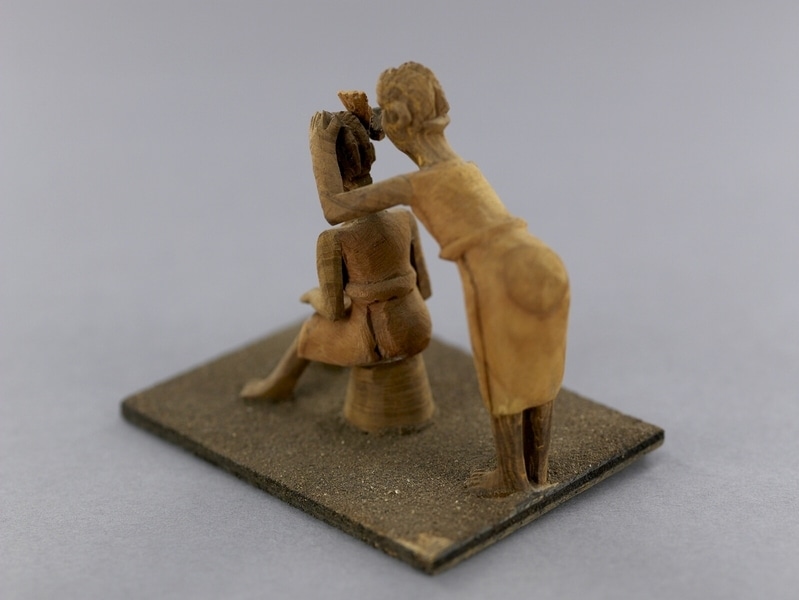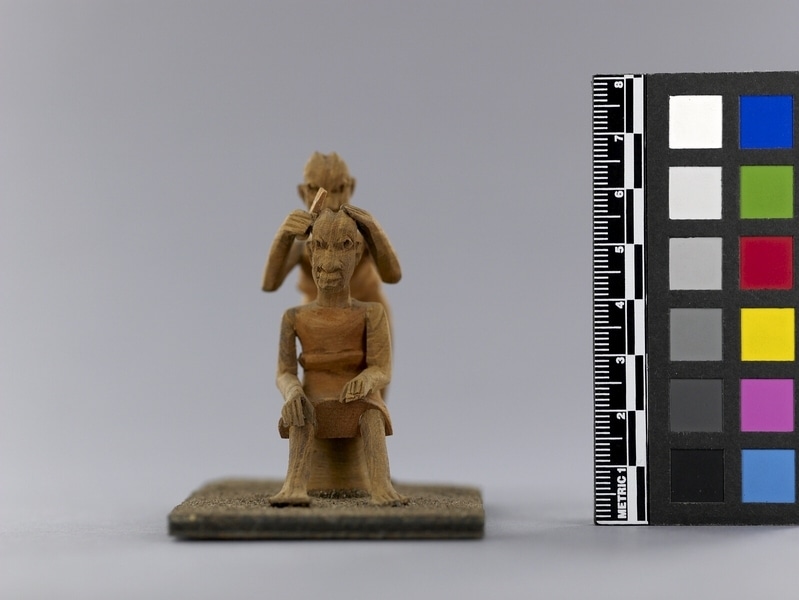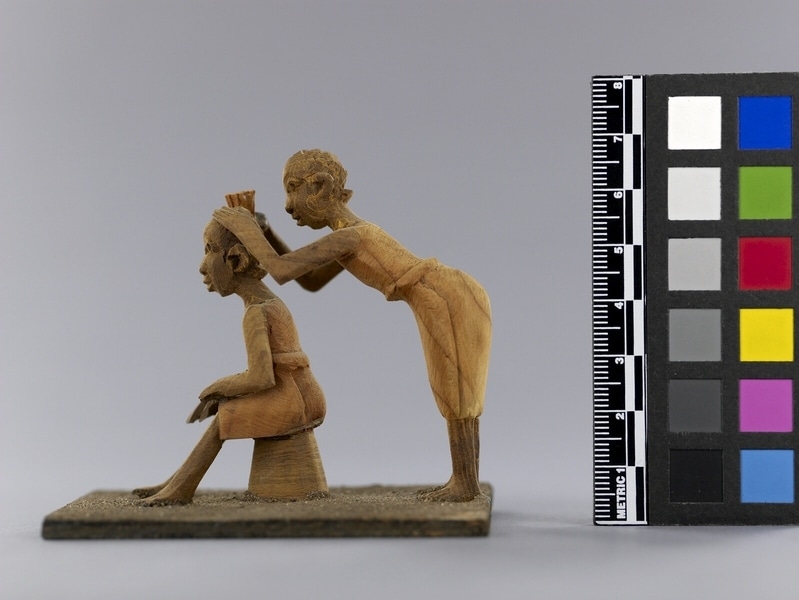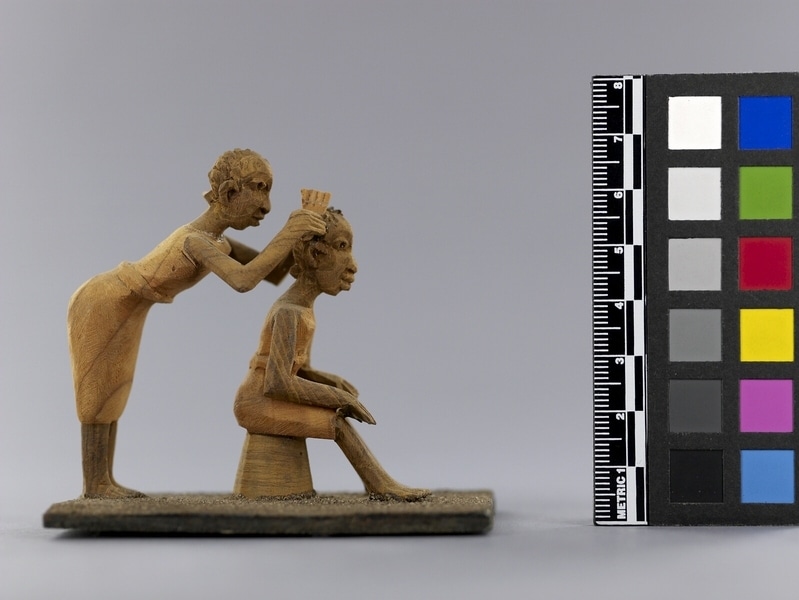Thorn Carving Item Number: K2.371 from the MOA: University of British Columbia




Description
Figures representing a woman bending over as she is combing her friend's hair, who is sitting before her on a cylindrical object tapering upward. The knees are bent so that the legs are angled frontward and outward. The elbows are bent so that the arms are resting just above the knees. Clothes are of a lighter wood colour than the body. Carved in pieces which are then glued together. On a wood base.
History Of Use
Thorn carvings are miniatures depicting a variety of scenes from Nigerian life. The carvings first began to be made circa 1930. The thorns vary in size; they can be as large as 12.7 cm long and 9.6 cm wide. The thorn wood is comparatively soft and easy to carve; they are traditionally carved by men.
Cultural Context
craft; tourist art
Specific Techniques
The light yellow-brown thorn and the dark brown thorn come from the ata tree; the light red-brown thorn comes from egun trees. The parts are glued together with viscous paste made that was made from rice cooked with water.
Item History
- Made in Kumasi, Ghana
- Collected by Deborah Taylor between 1971 and 1972
- Owned by Deborah Taylor before 1972
- Received from Leon & Thea Koerner Foundation (Funding source) and Deborah Taylor (Seller) during 1972
What
Who
- Culture
- Yoruba ?
- Field Collector
- Deborah Taylor
- Previous Owner
- Deborah Taylor
- Received from
- Leon & Thea Koerner Foundation (Funding source) and Deborah Taylor (Seller)
Where
- Holding Institution
- MOA: University of British Columbia
- Made in
- Kumasi, Ghana
When
- Collection Date
- between 1971 and 1972
- Ownership Date
- before 1972
- Acquisition Date
- during 1972
Other
- Item Classes
- carvings & sculpture
- Condition
- good
- Accession Number
- 0200/0079